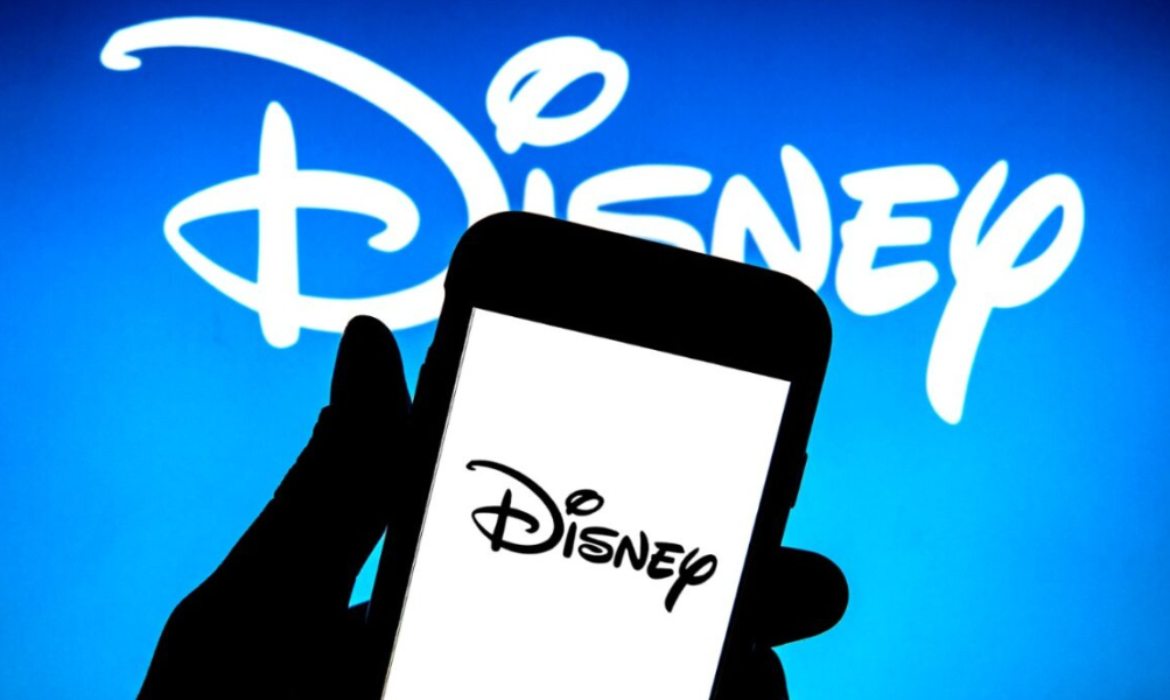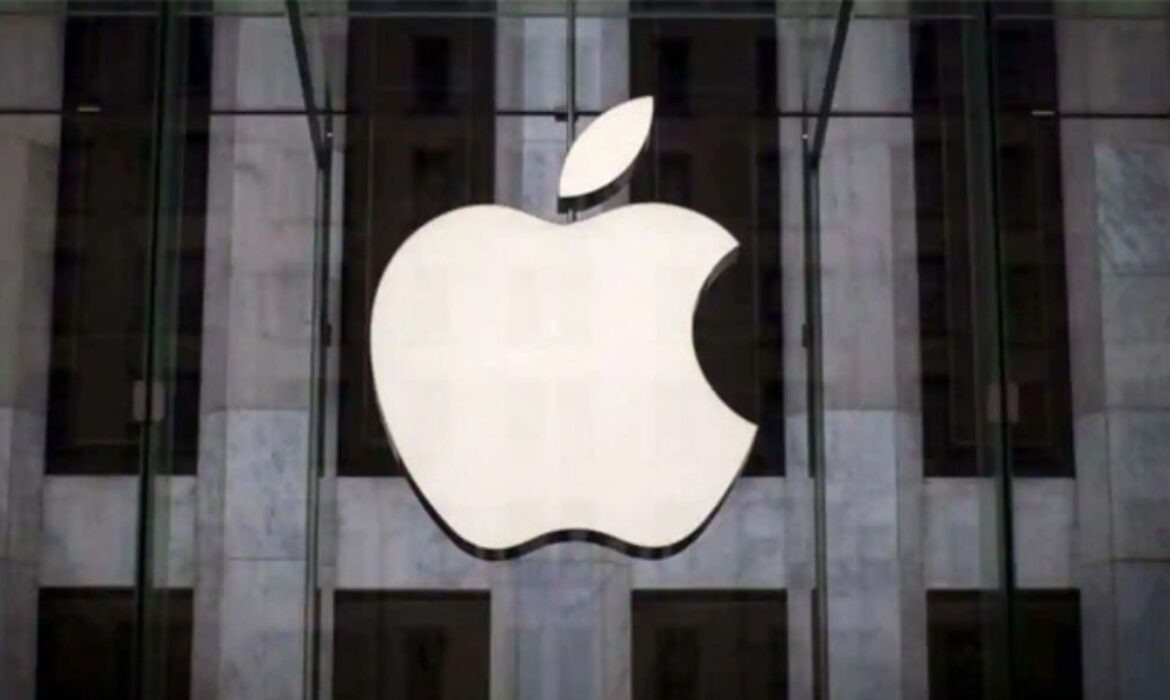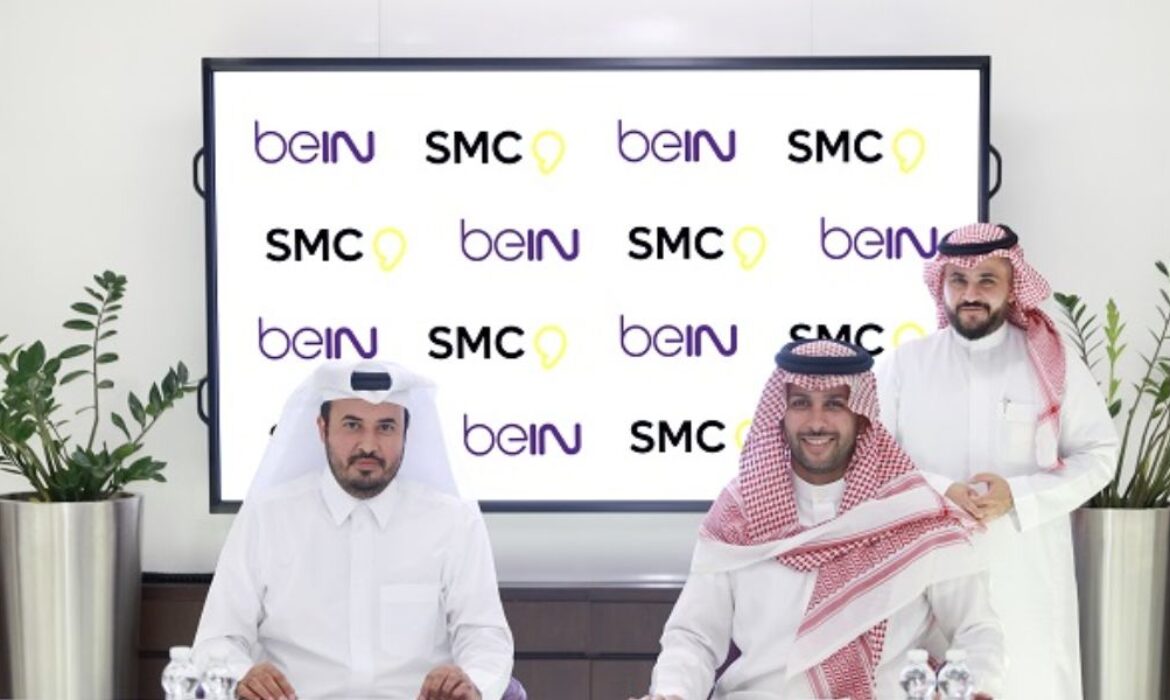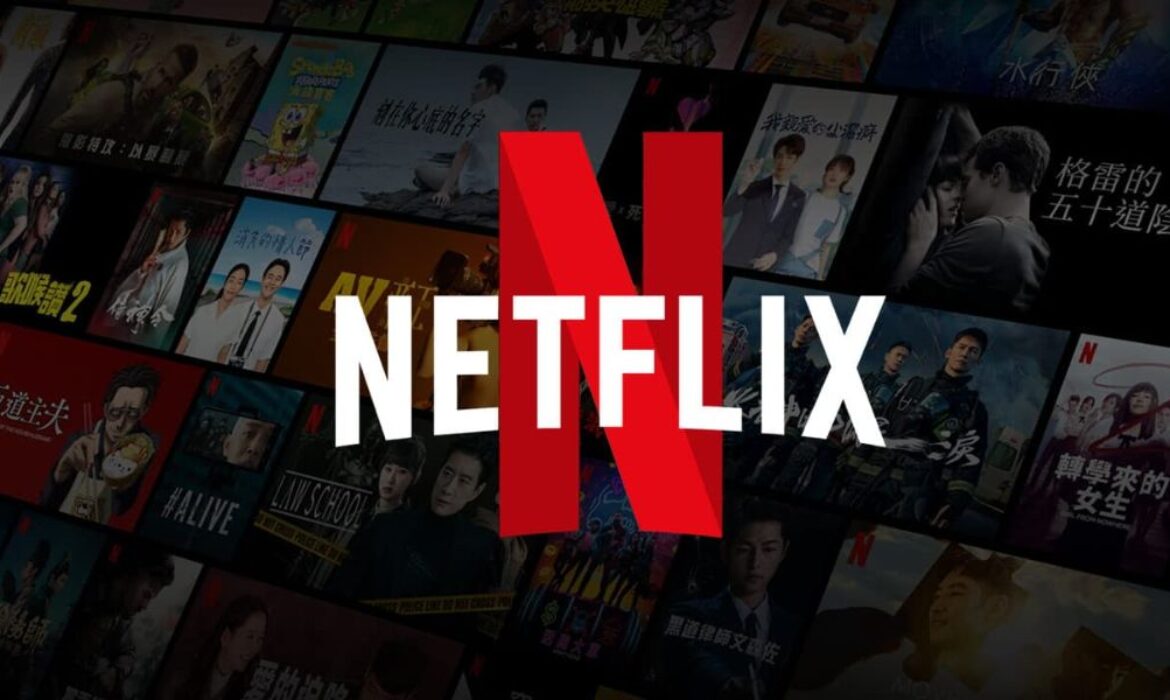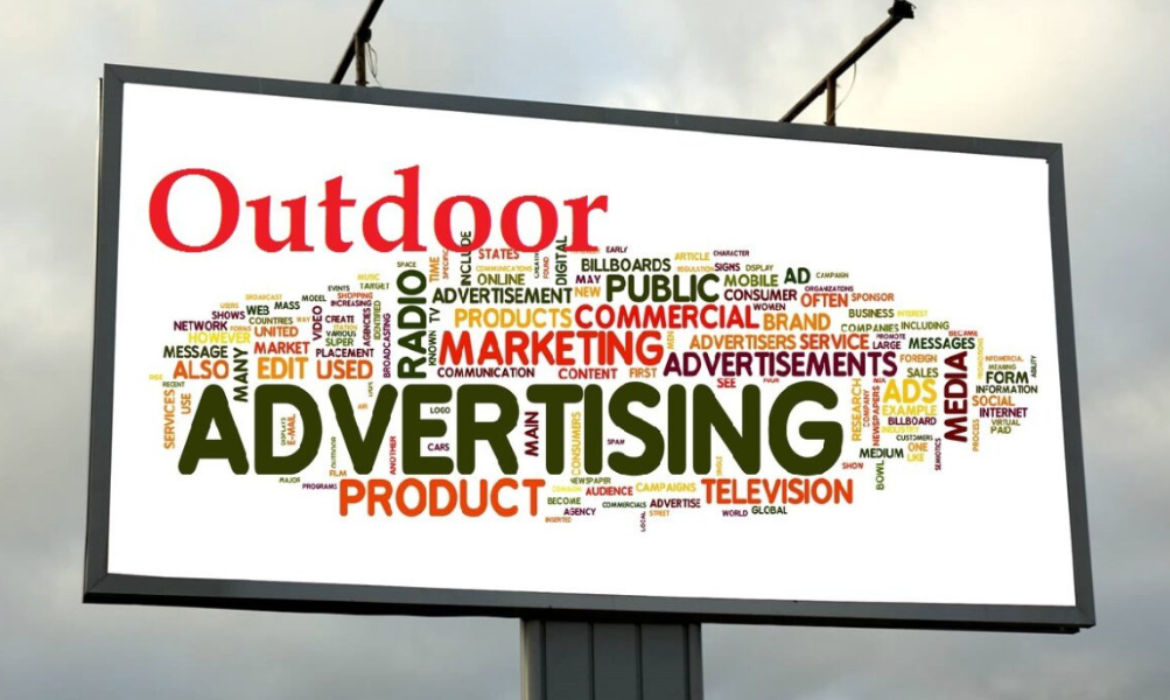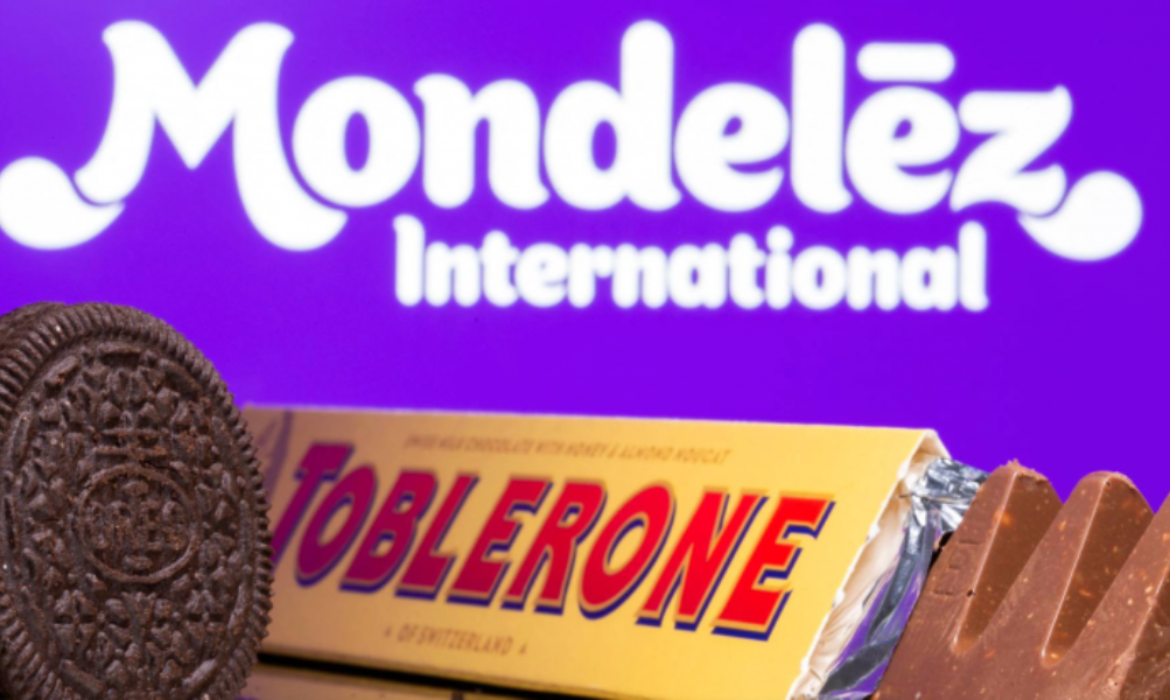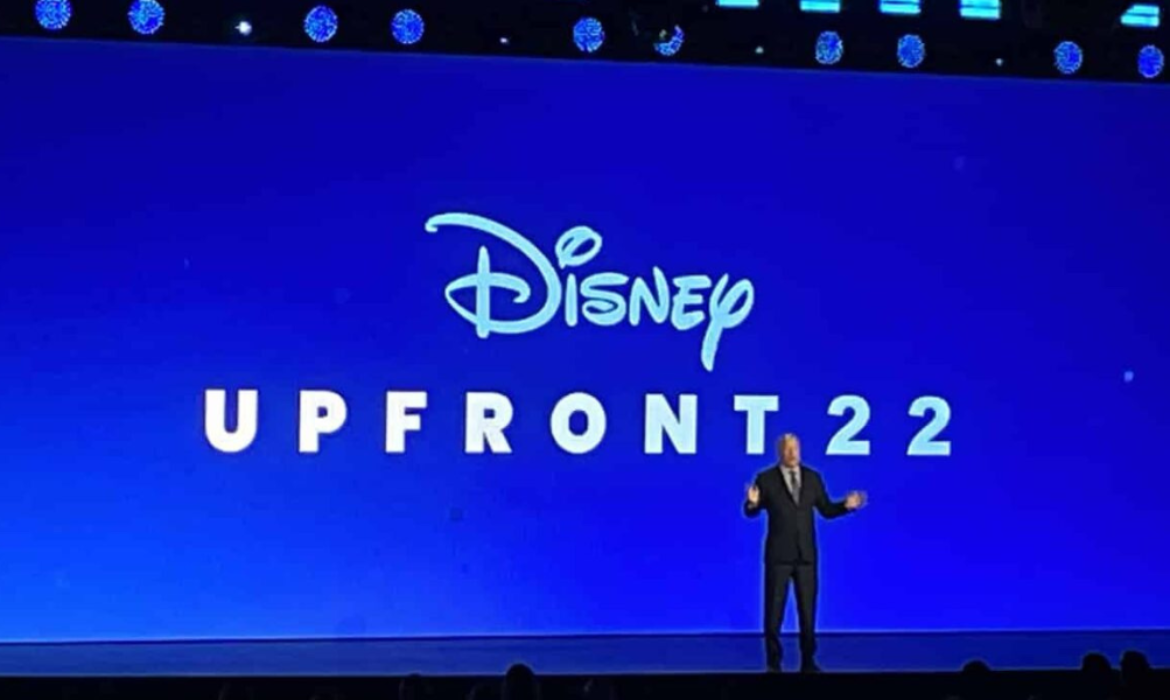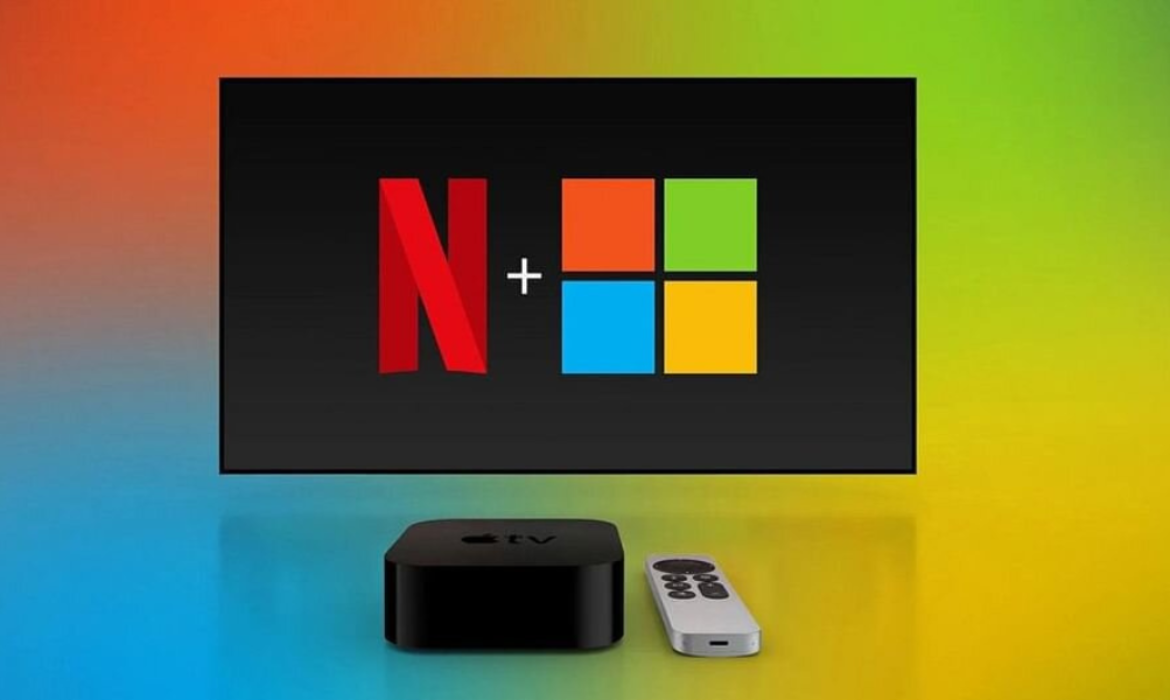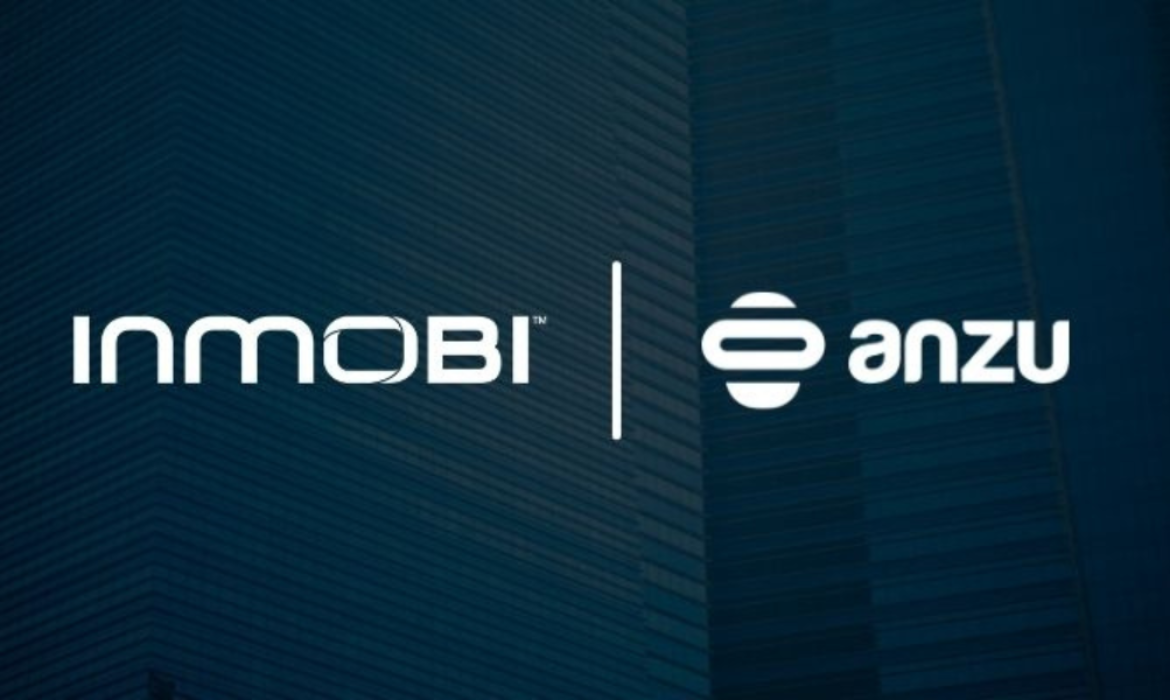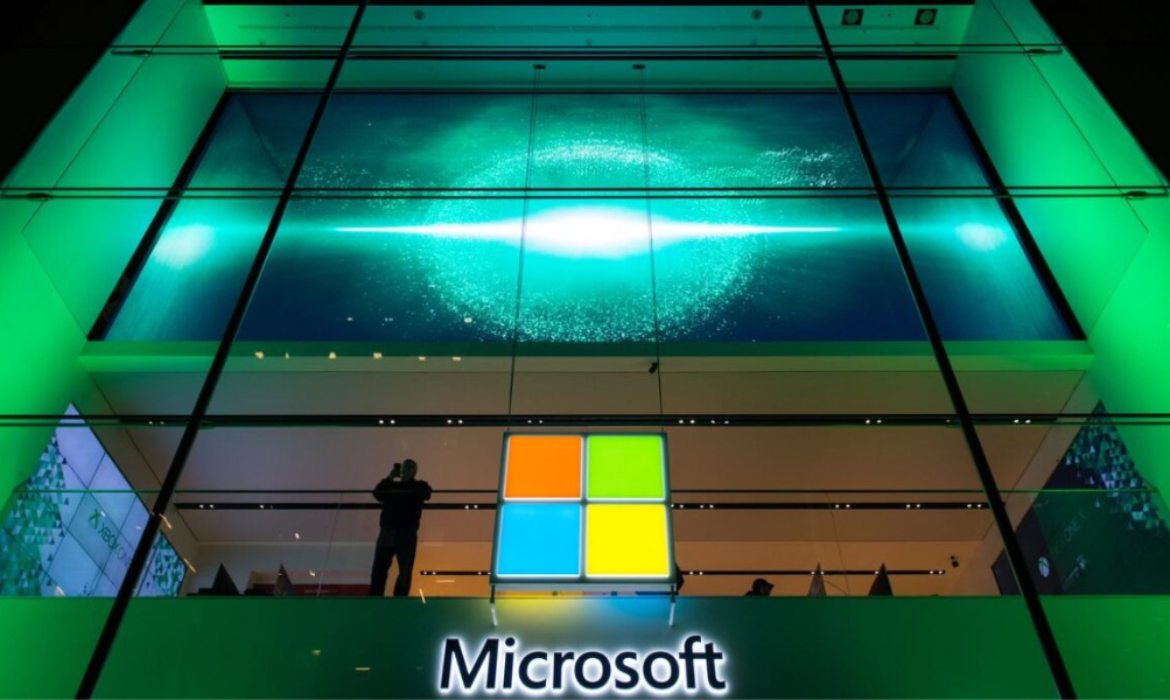Disney+ Is All Set To Lure Advertisers And Enhance Options For User Targeting.
Disney+ plans to get innovative with its user advertisement policies. Earlier, Disney+ offered the best package for users costing $7.99/ month. In this package, users can enable parental control. Advertisers were not allowed to target specific audiences with Disney+ advertising. However, with new policies framed, advertisers will get the independence of targeting the audience and households according to their choices. Meanwhile, Disney+ will also ensure the privacy of the users.
Users will get a variety of subscription options to choose from. Some of these subscriptions will support advertisers, as the package will enable advertisers to show ads to their audiences. Since Disney+ has always been strict about user privacy, it enables filtering advertisements following the appropriate age groups. The profiles of users under 18 years of age will receive the advertisements according to their age criteria.
“Expanding access to Disney+ to a broader audience at a lower price point is a win for everyone – consumers, advertisers, and our storytellers,” said Kareem Daniel, Chairman. He added, “More consumers will be able to access our amazing content. Advertisers will be able to reach a wider audience, and our storytellers will be able to share their incredible work with more fans and families.”
Disney+ has been one of the premium digital content providers. Streaming services like Hulu is one of the top-notch ad-supporting streaming services, providing on-demand video subscriptions.
Rita Ferro, President of, Advertising, highlighted her statement given to Digiday,
Since its launch, advertisers have been clamoring for the opportunity to be part of Disney+ and not just because there’s a growing demand for more streaming inventory.
She mentioned that,
Disney+ with advertising will offer marketers the most premium environment in streaming with our most beloved brands, Disney, Pixar, Star Wars, Marvel, and National Geographic. I can’t wait to share more with advertisers at the Upfront.
Now, advertisers will get options to target their audiences based on gender, age, and geo-location. Rita also hinted that from July, Disney+ would launch a much more sophisticated suite empowering advertisers to do more.
Disney+ aims to achieve its desired user target of 230-260 million by FY24. It will be a large pool of audiences for the advertisers, resulting in higher conversions. Disney+ builds its user database by collecting helpful information and the behavior of its users from different platforms.
However, advertisers should not worry if they are unable to get the minute details of the users through Disney+. Advertisers can take help from data brokers and sync that data with the Disney+ platform. Advertisers can use the “data clean room” to pipeline their data to target specific audiences.
Since data privacy has proven to be a threat in the past decade, companies are working to eliminate the risk of data theft and misuse of data from outside sources. In accordance brands like Apple, Facebook, and Google have implemented strict policies and introduced new ways to enable data privacy. And discontinuation of third-party cookies is one such major step. Similarly, Disney+ desire to introduce its platform for advertisers is considered to be one such step in the direction of its user’s data privacy.
The plans are yet to be introduced and to be specific with the budget and targeting of their audiences. Hence, advertisers might have to wait till the end of July.
Apple Building Advertising Network Around New Soccer Deal
Apple announced a deal with Major League Soccer(MLS) in June to stream all games exclusively via the Apple TV application. While more details are awaited, a new report from Bloomberg indicates that Apple is “building an advertising network for live television” as part of the MLS deal. The iPhone maker is holding discussions with advertising partners and MLS sponsors in advance of the launch next February about airing advertisements during soccer games and related shows.
The tech giant recently struck a 10-year deal worth about $2.5B to air MLS games in a new subscription service, as well as Apple TV+ streaming platform. The company will also stream a portion of games for free to users of the Apple TV app. Bloomberg reports that Apple is planning to run advertising in all three partnership tiers: the dedicated package paid TV+ subscriptions and the free TV app. The move represents an expansion of the company’s early live TV advertising, which is included in Major League Baseball games that already air on TV+.
The Athletic reported last month that Apple made a noteworthy move by making their Apple TV app the only place for fans to watch all Major League Soccer games without restrictions or regional blackouts. Moreover, Apple is also one of the frontrunners for NFL Sunday Ticket rights. If Apple ultimately wins the rights, advertising will play an important role in this package.
Apple has increased its aggressive advertising strategy, putting search advertisements in its maps service, for instance, as early as next year.
Apple, Advertising and Adtech
Apple’s advertising privacy restrictions have shaken the digital advertising sector, including those in iOS 14. But in the interim, Apple’s ad business has expanded significantly. Bloomberg estimates Apple generates roughly $4B in advertising annually, with a goal of increasing that number to double-digit billions.
Apple is actively expanding its advertising presence through new ad placements and technical DSP manager positions. It makes sense, doesn’t it? It is estimated that digital advertising is worth over a hundred billion dollars, with Google dominating this industry for many years. Meanwhile, the purpose of a DSP is to allow third parties to buy advertising and targeting data programmatically. And It’s no secret that data is Apple’s most valuable asset.
Apple’s automatic opt-out of invasive targeting, attribution, and advertising is one of the key reasons why consumers prefer it. The question is whether Apple’s built-in trust will be undermined after hitting native apps in iOS with ads.
With the company’s move to software and ad tech, it will undoubtedly face challenges. Even though Google did not innovate much in terms of technology or placements, it has decades of experience in digital marketing and even delayed the deprecation of cookies. It has a major pie of the market share too.
In light of all this, what does Apple’s advertising future look like? Legal and regulatory work still needs to be accomplished, as well as establishing a robust technology platform. In the shifting landscape of Apple’s business model from hardware to software and advertising, competitors need to step up their game. It’s going to be a healthy competition.
Interesting Read: AdTech Vs MarTech: Let’s Settle This Once For All!
BeIN Media Appoints SMC As An Exclusive Advertising Partner In MENA
BeIN Media Group, a sports broadcaster inks a partnership with Riyadh-based media representation firm SMC as its exclusive advertising partner in the Middle East and North Africa (MENA). Qatari-based beIN signed an agreement with SMC which covers advertising for all of its channels, including its flagship sports channel beIN Sports. A source familiar with beIN told Reuters, “The deal is in the region of $150 million.”
The strategic deal comes nearly two years after Saudi Arabia and three other Arab countries ended their dispute with Qatar, which had seen them sever all political, trade, and travel ties. SMC Chairman Mohammed bin Abdulelah Al-Khuraiji and BeIN Group CEO Yousef Al-Obaidily signed the agreement at BeIN’s MENA headquarters in Doha.
During the strategic partnership, local and international advertising companies will benefit from the promotion of an environment that stimulates creativity and innovation in the digital industry. In this way, they will gain a competitive advantage through various opportunities. The agreement runs from that covers the period before, during, and after the tournament up to the end of 2023, which is a great outcome for both groups.
And that’s what they said
Mohammad Al-Subaie, CEO of beIN MENA, is delighted to partner with SMC as they prepare for the world’s largest sporting event, the FIFA World Cup Qatar 2022, said,
“The agreement is not only commercially significant, but will also enable advertisers to reach a huge audience who are tuned into beIN’s various channels within the MENA region, through a leading media sales agency. More so, this partnership is a testament to the success of beIN’s growth strategy and its advancement both in MENA and globally. This is simply the beginning of our plans at beIN, and this agreement is just one of many great success stories which have been announced this year, with more to come.”
Khalid Waleed Alkhudair, CEO of SMC, further commented,
“This agreement with beIN provides us with an opportunity to implement SMC’s strategy of flexible and effective advertising and marketing services. We plan to utilise our top-of-the-line service models, which comprise the latest in advertising systems, in-line with the global developments in the industry, and evolving market demands.”
BeIN Sports is the official broadcaster of the 2022 soccer World cup. It is the only place to watch all 64 matches in most countries in MENA and France with coverage in Arabic, English, and French. Reuters reported that Saudi equity firms and US investors were considering an investment in BeIN sports. It has also been attracting the attention of the Saudi wealth fund PIF earlier this month, according to Bloomberg.
A group of over 120 presenters, reporters, commentators, and analysts will cover the World Cup, making it the greatest and most diverse team assembled in the history of the event.
Netflix Is Back In Game With New Ad Plans and Subscriber Growth
Netflix put an end to the subscriber losing streak in Q3 after gaining 2.4 M new subscribers. Reed Hastings Co-Founder and Co-CEO said, “Thank God, we’re done with shrinking quarters. That’s a big feeling of — we’re back to the positivity.”
Why it matters: The streaming giant had a rough patch in 2022 but rebounds in the third quarter with ad-supported tailwinds.
Quick Recap: Over the years, Netflix pitched for the ad-free model so the creators can focus on content than monetization. However, it reshaped its ad business with AVOD services to deal with losses and contribute to its growth. The company has witnessed gains after unveiling its Basic Ad plan in 12 countries, starting from Nov 3 in the U.S.
Details: In an investor call, the company said they are focused on new revenue streams, be it -the content side, advertising, or paid sharing and so they will no longer provide guidance on subscribers.
It is forecast to add 4.5 million subscribers next quarter, a bullish estimate considering it lost over 1 million subscribers in the first half of the year. The company touted newer hits, such as “Monster: The Jeffrey Dahmer Story,” and season 4 of “Stranger Things” that helped to move the needle last quarter.
By Numbers: CNBC reported the following financial numbers:
Revenue: $7.93 billion vs $7.837 billion, according to Refinitiv survey.
Expected global paid net subscribers: Addition of 2.41 million subscribers vs. addition of 1.09 million subscribers, according to StreetAccount estimates.
Will Ads add to the Growth?
The streamer said it was “very optimistic” about its new advertising business. COO Greg Peters anticipates sign-ups for Netflix Basic with Ads will add net new subscribers rather than existing subscribers switching off from current plans.
“We don’t expect a material contribution in Q4’22 as we’re launching our Basic with Ads plan intra-quarter and anticipate growing our membership in that plan gradually over time. Our aim is to give our prospective new members more choice – not switch members off their current plans. Members who don’t want to change will remain on their current plan, without ads, at the current price.”
Subscription growth is forecasted based on its upcoming content slate and the typical seasonality that occurs during the last three months of the year. With a lower price, a business will have a balance between monetizing with ads and providing access to all their great content.
Strong Competition
Netflix is in a highly competitive industry with viewers having a vast choice- from linear TV to streaming, YouTube to TikTok, and gaming to social media. Netflix noted its competitive advantage in a note to investors, saying:
“Our competitors are investing heavily to drive subscribers and engagement, but building a large, successful streaming business is hard – we estimate they are all losing money, with combined 2022 operating losses well over $10 billion, vs. Netflix’s $5 to $6 billion annual operating profit.”
The streaming war is real. Streaming subscribers are not churning away because they are switching to other providers, not stopping streaming. The streaming industry is more competitive and ad-supported than ever before, but it still has the potential to evolve. Reeds explained that Netflix and Disney are two big brands in the premium space. And they are battling to provide the best content and low prices, basically all the competitive dynamics.
Ad inventory and targeting
Netflix is completely sold out on its ad inventory for the launch as the initial demand was very strong. This shows that advertisers are interested in the proposition of bringing their brands and their ads on Netflix. It is also building in a lot of capabilities over the next couple of quarters that will be important to advertisers to make that advertising offering increasingly attractive.
Netflix accelerated the release of its ads tier, which is why it has limited targeting options. Right now. they will have basic targeting capabilities with Basic Ad plans. Gregory K. Peters COO & Chief Product Officer said, “we do have relatively basic targeting capabilities in terms of contextual targeting, genre, et cetera.”
He further added, “Now our job is to move from that into more of what we expect from a digital world, where we have 100% signed-in audience, fully addressable, fully targetable, and so we can start to layer in additional targeting capabilities over time.”
Privacy is also a priority for Netflix. And that is where Microsoft fits the bill. Despite having deeper roots in connected TV advertising than Microsoft, the industry was surprised by Netflix’s ad sales partnership with Microsoft. Peters said, “We’re very cognizant of privacy. And all of the data that we use will just be used to basically deliver more relevant ads offering on Netflix, and we’re not using that data in any way, shape or form for a profile building off Netflix.”
Peter believes Microsoft has the go-to-market capability of Netflix. With the joint capacity growth, they will be able to serve the advertisers better. Netflix recently announced measurement partnerships – DoubleVerify and Integral Ad Science to handle ad verification, viewability and brand safety, and with Nielsen for the audience measurement.
Big change in account sharing
Netflix has finally cracked down on password sharing which has eaten into its bottom line. The streamer will monetize account sharing and will roll out in early 2023. The ability for borrowers to transfer their Netflix profile into their own account, and for sharers to manage their devices more easily and to create sub-accounts (“extra member”), if they want to pay for family or friends. In countries with a lower-priced ad-supported plan, the streamer expects the profile transfer option for borrowers to be especially popular.
Peter said they have been working to find a balanced approach that supports customer choice and customer-centricity. But also will make sure that “as a business, we’re sort of getting paid when we’re delivering entertainment value to consumers.”
Interesting Read: Have You Played Netflix Games?
MediaMix And Starzmedia Launched OOH Advertising Across UAE
OOH company Media Mix Advertising and Starz Media join forces to launch OOH advertising across the UAE. Paul Abouchacra, who is in charge of Media Mix Advertising, is an experienced man in the UAE when it comes to out-of-home advertising.
Media Mix’s vision is to become one of the world’s leading outdoor media companies while steadily expanding its market presence. In Dubai, UAE, it seeks to offer brands professional, visible, and targeted exposure in the city’s landscape by strategically placing outdoor advertising mediums.
As a result of the strategic alliance between StarzMedia and Media Mix, both companies gained mutually beneficial results. StarzMedia, Danube’s sister company, provides 528 bus shelters and mupis for the entire city of Dubai.
Interesting Read: Lemma Partners With Continuum, Expand DOOH Presence In The Middle East
Working together

Image Credit: Campaign Middle East
As a result of the acquisition, Media Mix and Starz Media now own 25 unipoles in Dubai. Four of them were acquired on 1st May. They can be found opposite Dubai Festival City, with two unipoles on Al Rebat Street and two on Nadd Al Hamar Street. A recent acquisition involved 21 unipoles installed along 30 kilometers of Sheikh Zayed Road between Jebel Ali and Dubai Parks. Moreover, a full takeover of Abu Dhabi theme parks was achieved through the booking of 21 unipoles along the total stretch of 60 kilometers on Sheikh Zayed Road.
Interesting Read: Dubai To Host Global Metaverse Event, Unveils Its Ambitious Strategy
Publicis Groupe Wins Most Of Mondelez’s Global Media Business
Publicis Groupe won a lion’s share of Mondelez’s global media business – the makers of Cadbury and Oreo worth $1.6bn, as per media reports. The remaining business is with WPP and Vayner Media.
Publicis will lead the business in Latin America, Europe, the Middle East, and the North African Peninsula, South Africa, and China. It will also manage Mondelez’s traditional video investment, content, and multicultural marketing in the U.S. and Canada. Publicis Groupe has gained $450 million of media billings across Europe, including the UK and Italy (formerly handled by Carat) as well as France and Germany (formerly handled by Wavemaker). By acquiring major European markets, it is estimated that it has increased the global billings from 30% to 70%
The redistribution of the business took place following a review that concluded this week. VaynerMedia has continued to lead communications planning and digital buying in the US and Canada. WPP has been appointed to lead Mondelez business in Southeast Asia, India, Australia, New Zealand, and Japan.
Mondelez is one of the world’s largest advertisers, spending $1.6 billion on advertising in 2021. Recent years have seen Publicis Groupe slowly expand its share of Mondelez advertising services.
Campaign UK quoted a Mondelez spokesperson as saying,
“To lead the future of snacking, we are continuing to evolve our marketing approach to be more consumer-centric and digitally-enabled than ever before. Since our last media review in 2018, we have re-engineered our agency model across creative and production to deliver meaningful impact to the Mondelez business.
After a careful review, we are proud to announce key media agency partners have been selected to build on this foundation and further accelerate our growth.”
Interesting Read: The Journey From Deterministic To Probabilistic Marketing
Disney Ad Sales Strongest At Upfront, Records $9 Billion
Disney’s upfront advertising process ended with a record $9 billion in ad sales – 40% of which came from streaming and digital. Disney has become the latest publisher to finish upfront.
This is the first year Disney has offered Disney+ as an advertising option. The forthcoming ad-supported tier of Disney+ was cited by the company as a game-change and particular strength among its platforms, which also include ABC, Disney Channels, ESPN and ESPN+, Freeform, FX, Hulu, and National Geographic.
Interesting Read: Disney Signs A Major Adtech Deal With The Trade Desk
What is an Upfront?
Uninitiated viewers may not know that broadcast and cable networks hold spring events to promote their new programming lineups. As a classic futures market, the idea is to entice media buyers to commit to ad contracts for shows months or even years down the road. To put it another way, they buy inventory in advance.
Disney at the Upfront
The 2022-23 upfront posted the second straight year of double-digital gains in sports volume and pricing.
The CPM(cost per thousand viewers reached) increased in streaming, sports, broadcast, and cable, the company said, with prime seeing double-digit increases and high single-digit increases in addressable ads. In contrast to traditional advertisements, addressable ones can be targeted based on a person’s purchase history or other factors far beyond their age and gender.
The company also said it secured DEI commitments from every top-performing categories included Diversified Consumer Services, financial services, media & entertainment, pharmaceutical, sports gaming, and travel & leisure. The demand for Disney HuluXP, an integrated video ad platform across the Disney portfolio, also increased. Rita Ferro, president of ad sales for Disney Media and Entertainment said in a statement,
“Disney Advertising entered our 2022-2023 upfront committed to executing on our strategic priorities – streaming, multicultural and inclusion, sports and entertainment – and we delivered.
I am proud to partner with all of our clients to reach audiences at scale across all screens, and alongside the most premium content.”
The upfront process has been unlike most previous years for all of the major media companies. Traditionally, the upfront sales should wrap in the spring instead it dragged into summer this year. With streaming the ritual has become more complex and less calendar-based, allowing network parents to weather the ongoing decline in traditional bundles and overall live tv viewing.
Interesting Read: AVOD Surprise: Netflix Advertising Powered By Microsoft
What is important for Disney?
Ferro gave Adweek an overview of Disney’s upfront priorities in May and said,
“The upfront was really about how do we tell a big-picture story of the volume of content coming from the Walt Disney Company because we have a lot of different endpoints, and we’re the home of streaming in a way that no one else has in the marketplace, premium storytelling in the streaming space with Hulu that has been around for 14 years. But since it was integrated and we took operational control a couple of years ago, it has been a driver of the AVOD opportunity in the marketplace.”
The new ad-supported tier would be coming to Disney+ later this year and would be launching internationally next year.He also explained that it will have an average of four minutes of commercials per hour.
“The reason for that is we know most people come to Disney+ for our movies, and movies have a different ad load than a series would. So what drives Hulu is more series. What drives Disney+ is more consumption of movies, and therefore the ad loads will look different. So it’ll be an average of four minutes an hour, but it depends on the types of content you stream.”
Interesting Read: Marriott International : A Hotel or An Ad Tech Company?
AVOD Surprise: Netflix Advertising Powered By Microsoft
Netflix is building its advertising business and the streaming giant has signed Microsoft as its first ad tech partner. In April, Netflix surprised the world with the news that it plans to launch an ad-supported tier. Industry watchers were expecting that Netflix was close to picking an advertising platform to help it build the ad-supported tier of service.
Why Microsoft of all the choices?
Microsoft Advertising is the dark horse contender for the Netflix account and a positive surprise for the industry. Notably, other potential adtech partners such as FreeWheel or Google have interests competitive to Netflix’s. They both sit inside companies that have their own content plays on streaming TV. This likely knocked them out of the race.
Prior to its acquisition of Xandr, Microsoft was not even considered a serious programmatic competitor in the industry. As an early, dominant player in programmatic display advertising, Xandr (formerly AppNexus) started focusing on the TV/video ad space after being acquired by AT&T in 2018.
Xandr is well suited to build Netflix’s ad operation from scratch, a task that won’t be easy but isn’t new for the company. The ability to provide privacy, combined with an established ad tech stack and a strong ability to iterate quickly, helped Xandr push over the finish line. Greg Peters COO and CPO said,
“Microsoft has the proven ability to support all our advertising needs as we work together to build a new ad-supported offering. More importantly, Microsoft offered the flexibility to innovate over time on both the technology and sales side, as well as strong privacy protections for our members. “
Interesting Read: Marriott International : A Hotel or An Ad Tech Company?
What does this mean for advertisers?
Marketers looking to Microsoft for their advertising needs will have access to the Netflix audience and premium connected TV inventory. The Microsoft platform will be the exclusive provider of all Netflix ads.
In the future, a Netflix subscription with ads at a lower price may entice value-seeking customers. With Netflix entering the ad-supported streaming world (AVOD), advertisers will have access to a wide range of premium inventory.
As AVOD continues to expand, this partnership not only supports the momentum but also creates more competition in the field. The recent Disney partnership with the Trade Desk also gives advertisers access to more premium AVOD inventory.
Interesting Read: Connected TV Explained: The Essential Glossary Of CTV
Why do we care?
With Netflix getting into the AVOD market, the equation changes entirely for TV watchers who compare steep cable subscription fees with rising streaming costs.
CTV advertising is known for its chaos, consumer dissatisfaction, and controversy. Netflix has never faced any of these issues. The biggest challenge will be to maintain the balance between efficient monetization and retaining subscribers who are used to ad-free content.
The question of the hour: Does this partnership really push the envelope on ad innovation?
Certainly, Microsoft brings gaming to the table, where there are opportunities and innovation, but there is still much room for development. If It could be magic if these new partners are able to translate this kind of next-gen thinking into the more traditional streaming TV ad ecosystem.
Interesting Read: Is Microsoft Reinventing Its Ad Business With Massive Acquisitions?
InMobi And Anzu Partners To Bring Programmatic In-Game Ads To APAC Region
InMobi, a leading provider of content, monetization, and marketing technologies that help businesses fuel growth has revealed a partnership with in-game advertising solution Anzu to provide its advertisers with direct access to Anzu’s global mobile programmatic inventory.
Anzu’s award-winning in-game advertising solution allows programmatic advertisers to run their banner and video ads via blended yet highly viewable IAB-compliant ad formats that sit on 3D objects like roadside billboards, stadium banners, and buildings. The ads are designed to complement the gameplay, respect gamers, and in many cases, make the gameplay experience more realistic.
The Anzu platform integrates with HUMAN for fraud detection; Comscore, Lumen, and Nielsen for brand lift measurement; and Kochava for data enrichment. Anzu and Moat have also brought in-game viewability measurement for the first time to the market, allowing InMobi’s advertisers to see in-game metrics when programmatically displaying ads in-game.
Interesting Read: Is Measurement Giant Nielsen $16Bn Buyout A Hope For Turnaround?
Reaching out to the APAC region
Anzu’s SDK will now be available to InMobi-partnered game developers, including Ubisoft, MyGames, and Sir Studios
Itamar Benedy, Co-Founder and CEO of Anzu said,
“I’m excited that this partnership with InMobi will help many more APAC advertisers experience the huge opportunity that in-game advertising presents. InMobi’s expertise and vast advertiser network, combined with their knowledge of the APAC landscape, will help supercharge our solution within this market. There are more gamers in APAC than anywhere else in the world, and our solution will help brands to reach them in a non-disruptive, brand-safe way that compliments the gaming experience.”
InMobi’s direct connections with demand-side platforms around the globe and direct supply to Anzu’s global inventory help advertisers take advantage of these ad experiences via optimized supply routes. InMobi will be able to open up an array of mobile games across a wide range of genres with Anzu’s inventory, allowing advertisers to reach players in immersive environments.InMobi will be able to offer an array of mobile games across a wide range of genres with Anzu’s inventory, allowing advertisers to reach players in immersive environments.
Kunal Nagpal, Senior Vice President and General Manager of Publisher Platform and Exchange at InMobi said,
“InMobi’s preferred in-game advertising partnership with Anzu, co-funded by the world’s largest advertising agency WPP, allows our clients to seamlessly connect with gamers through integrated, non-disruptive ads.This partnership is beneficial to all parties, with new features and the goal to drive connections between consumers and brands with Anzu’s premium technology.”
New mobile game downloads have risen by 45% from pre-pandemic levels since the Covid-19 pandemic onset. In APAC, gaming app consumption has doubled year over year, indicating a shift toward making gaming a part of everyday life. The mobile-first region is known for its strong preference for smartphone gaming with on-the-go convenience and entertainment – resulting in over 1.5 billion mobile gamers. With the rise of the metaverse and the thriving communities in the region, gaming gives marketers a clear, accessible path to the metaverse to reach their audiences effectively.
InMobi recently launched its independent mobile mediation platform, Meson, to allow publishers to control and manage their data and monetization.
Interesting Read: Walmart Connect: Walmart’s Ambitious Advertising Plans For Its Programmatic Platform
Is Microsoft Reinventing Its Ad Business With Massive Acquisitions?
Microsoft has a sizeable ad business. In the latest earnings call, the company reported the advertising revenues “surpassed $10 billion, ex-TAC ”. The company believes its vertical will grow in the mid-to-high teens.
“Across Bing and Edge, we are creating differentiated, high value experiences for consumers and advertisers in key verticals, including shopping. More broadly, we are expanding our opportunity in advertising.”
The company has taken center stage with its recent notable acquisitions -gaming giant Activision Blizzard and a leading adtech company Xandr. Recently, Nadella said,
“And with our acquisition of Xandr, we will bring to market new advertising solutions that combine our deep audience understanding and customer base with Xandr’s large-scale data-driven platforms.”
Does all this mean the stirring of a sleeping giant in the ad industry? Microsoft has access to an extremely powerful first-party data operation based on subscriptions. Even though Bing, Edge, and MSN may seem passe today. However, Microsoft still has a huge audience which includes Xbox, Game Pass, LinkedIn, and Outlook.
Interesting Read: 5 Ad Industry Trends That Are Likely To Unveil in 2022!
All The Ingredients Of The Ad Business
Despite the size and stellar performance of its ad business, Microsoft has not really been seen as a true rival for Google and Facebook in the advertising sphere. It’s been some time since Amazon officially dispensed Microsoft from the “Big 3” of digital media, joining Google and Facebook among the world’s largest digital advertising companies.
Still, analysts do not seem to have discounted Microsoft’s ad dominance. As GroupM Business Intelligence Global President outlined in a report, “We estimate advertising to be a $15 billion business in 2021.” These figures are before Xandr’s acquisition; making Microsoft the fourth largest player outside of China in ad sales. Weiser attributes this to a surge in overall ad demand, as well as LinkedIn‘s success in recruiting advertising following the “Great Resignation.”
Ad offerings from Microsoft currently include ads on its search engine Bing, placements on its O&O networks, as well as its Microsoft Audience Network, a programmatic network that places native ad units on properties like CBS Sports and Fox Business. This is in addition to its retail media offering PromoteIQ.
There is still plenty of opportunities for Microsoft to enhance its ad revenue even beyond what it is currently doing. For its advertising business, the company has “bold ambitions”, especially around data, audiences, and international expansion.
Interesting Read: A Panoramic Perspective Of Amazon’s Advertising Business!
Xandr- A crucial ingredient
The acquisition of Xandr (formerly App Nexus) will not only solidify Microsoft’s position as a prominent ad tech player but also develop capabilities in the demand-side and supply-side of advertising.
On the supply side, it helps them monetize their data and ID better because in the past, they didn’t sell that outside of their own businesses but now they can do so with Xandr. On the demand side, it helps them secure more budget.
Xandr and Microsoft had a close relationship before their merger, which may have led to a much better outcome. Recent acquisitions have the potential to awaken the sleeping giant. In contrast to before, Microsoft has more content, data, and now technology. All walled gardens possess this very powerful characteristic. So, is there a new walled garden in making? Experts interpret this acquisition as Microsoft’s bid to build a walled garden with a buying platform, unique inventory, persistent ID layer, and proprietary data.
Activision Blizzard- an advantage to ad-funded gaming
Xandr’s purchase is a drop in the ocean compared to the Activision Blizzard deal. This acquisition provides a shortcut for Microsoft to ramp up its content offerings. It will also help to build out their audience, a key area for Microsoft’s ad business.
Activision’s great content could also boost subscription numbers for Game Pass, assuming the regulatory approval. Both are hoped to drive future growth for Microsoft’s gaming division as revenue models and platforms shift in the industry. Activision Blizzard’s developer resources will expand Microsoft’s ability to make games, and as a result, the company’s metaverse plans will be bolstered.
Interesting Read: 6 Data Privacy Trends To Look Out For In 2022!
Cross-Platform Monetization
Microsoft could increase sales and monetization by connecting its various tech properties, such as CTV and in-game ads. ( Note-Video game consoles support streaming apps for the CTV category.)
In addition, the search business presents them with a great opportunity to grow their advertising revenue. As Bing is the second-ranked search engine in the U.S., Xandr can integrate its search intent data.
Xandr can help Microsoft build out its in-house ad tech stack. Ads across their content portfolio could be served through Xandr. The company could start an open demand-side platform and plug Xandr in all the in-game inventories. Xandr could be the link between all their inventories, even on consoles. Publishers can upload some creativity to appear in games like Candy Crush, Call of Duty, and the Xbox storefront. However, few experts are not convinced of any brand link between the Xandr acquisition and the Activision Blizzard acquisition as the space of adtech is quite further down the chain.
Microsoft’s own mobile apps, native content, and CTV assets can be monetized through Xander’s DSP, SSP, and Xandr Curate’s audience data-fueled curation capabilities. These capabilities serve as a powerful foundation for the omnichannel advertising ecosystem.
Interesting Read: All You Need To Know About Connected TV Advertising!
Wrapping Up
As a credible alternative to the current market leaders, Microsoft’s brand could undoubtedly be instrumental in establishing the advertising offering as a viable proposition. However, Microsoft will require to overcome two points at issue- lack of non-search DNA and mobile app monetization. The company has predominantly focused on search. Also, it is a learning curve for Xandr too, as mobile app monetization and native is not its expertise.
History shows that mere having adtech sprinkled with data or inventories on top won’t suffice to compete with the likes of Google or Facebook. Much more is needed to succeed realistically and very few companies have it. And Microsoft is absolutely one of them. Challenges lie ahead but are achievable. A matter of time for sleeping ad giant to wake up!
Interesting Read: The Ultimate A-Z Glossary Of Digital Advertising!

